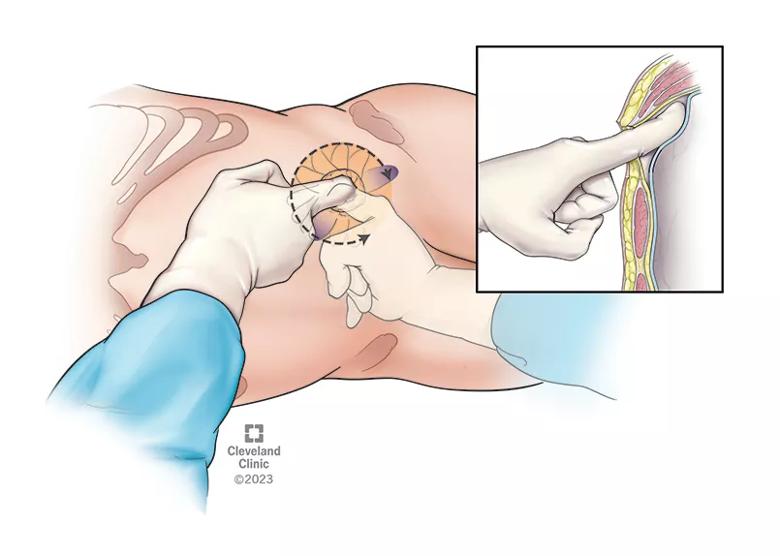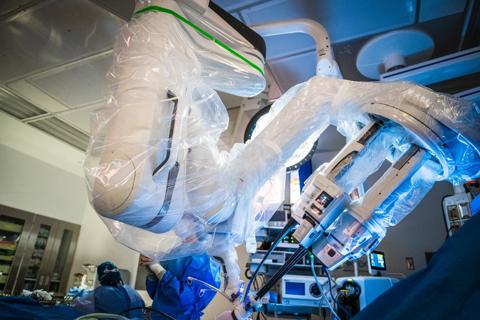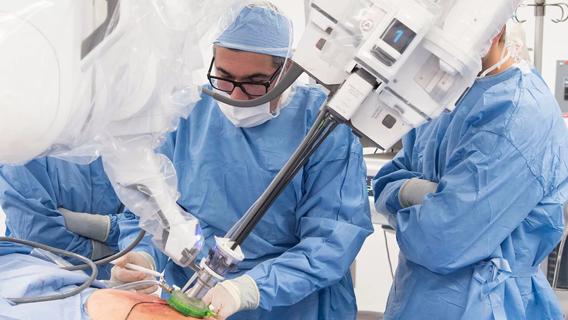Minimally Invasive Pediatric Nephrectomy: Cleveland Clinic's Innovative Low Anterior Access Approach
Pediatric urologists at Cleveland Clinic are redefining pediatric nephrectomy with a novel low anterior access (LAA) approach using the single-port (SP) robot. This innovative technique, already successful in adult populations, offers significant advantages for young patients. The method garnered significant attention at the 2025 Annual American Urological Association Meeting in Las Vegas, where it was presented by Dr. Julie Klock, Dr. Jessica Hannick, and Dr. John (Jack) Weaver.
Understanding Low Anterior Access (LAA) for Pediatric Nephrectomy
So, what exactly is LAA? It's a minimally invasive technique that utilizes a small inguinal incision to directly access the retroperitoneal space.
- Direct Access: LAA provides direct access, minimizing disruption to surrounding tissues.
- Single Small Incision: This approach uses only one small incision, improving cosmetic outcomes.
- Retroperitoneal Space Access: Surgeons directly access the retroperitoneal space, avoiding the intraperitoneal space.
Dr. Jihad Kaouk, Chair of the Department of Urology at Cleveland Clinic, emphasizes, "The SP robotic system allows us to regionalize surgeries further and avoid the intraperitoneal space. With the addition of LAA, we can spare upper abdominal muscles, improve cosmesis, and decrease postoperative pain.” This highlights the potential for a less traumatic surgical experience and faster recovery.
How the SP Robot Enhances LAA
The single-port (SP) robot plays a crucial role in maximizing the benefits of LAA:
- Precision: The SP robot provides enhanced precision during the delicate surgical procedure.
- Minimally Invasive Nature: Combining LAA with the SP robot further reduces invasiveness, leading to smaller incisions and less tissue disruption.
- Improved Cosmesis: The technique contributes to improved cosmetic results due to smaller incisions.
Cleveland Clinic urologists have pioneered the combined use of LAA and SP robotics, extending its application from pediatric pyeloplasties to now include nephrectomies. Dr. Kaouk and his team were the first to report using this combined approach in adult patients for pyeloplasty and retroperitoneal partial nephrectomy, paving the way for its use in pediatric cases.
Evolution of Nephrectomy Techniques: From Open to Minimally Invasive
The evolution of nephrectomy techniques has dramatically improved patient outcomes.
Traditional Open Surgery
Prior to minimally invasive methods, open surgery involved:
- Large Flank Incisions: Significant incisions near the ribs.
- Muscle Disruption: Penetration of various muscle layers.
- Prolonged Recovery: Resulting in substantial postoperative pain and extended recovery times.
Robotic-Assisted Surgery
The advent of robotics introduced smaller incisions:
- Smaller Incisions: Access points through the abdominal wall, typically ranging from one to four incisions up to 1 cm each.
- Reduced Pain: Less postoperative pain compared to open surgery.
- Faster Recovery: Shorter recovery periods, allowing patients to return to their normal activities sooner.
SP Robot and LAA: The Next Advancement
The combination of the SP robot and LAA provides the most advanced approach:
- Single, Small Incision: Surgical access through a single 2.5 cm to 3 cm lower abdominal incision.
- Improved Healing and Cosmesis: Wounds heal well with excellent cosmetic outcomes.
- Enhanced Pain Control: Patients experience excellent postoperative pain control, often reducing the need for opioids.
Multiple reports and Cleveland Clinic's extensive experience show that in adult patients undergoing SP urologic surgeries with the LAA approach are seeing a significant reduction, and sometimes complete elimination, of the need for postoperative opioids. This is coupled with earlier hospital discharge; in some cases, same-day surgery is possible.
Ideal Candidates and Key Considerations
Dr. Hannick notes that patient selection is crucial for the success of this procedure. Ideal candidates generally:
- Age: Are at least 18 months old.
- Weight: Weigh more than 10 kg.
- Indication: Require kidney or ureteral surgery.
Considerations for Pediatric Urologists Adopting LAA
Implementing the SP and LAA approach requires:
- Specialized Training: Most urologists are trained in multiport robotic surgery, so there is a learning curve.
- Institutional Support: Requires support from the institution and nursing staff.
- Mentorship: Access to a mentor or preceptor experienced in adult general urology or urologic oncology is essential.
Dr. Hannick advises, “As with many new technical modalities, for now, the adult urology population is where most pediatric urologists will be learning these advanced techniques. When embarking on an SP robotic practice, observe cases, participate in simulations, and then start with proctored cases until you get comfortable.” This structured approach ensures a safe and effective transition to this cutting-edge surgical technique.















